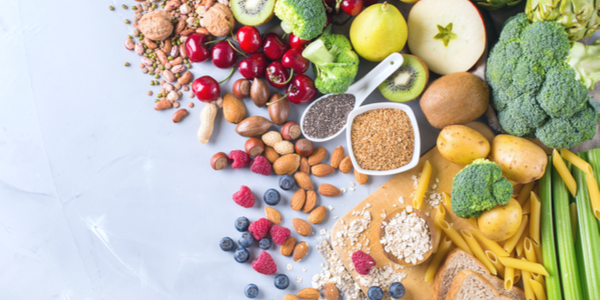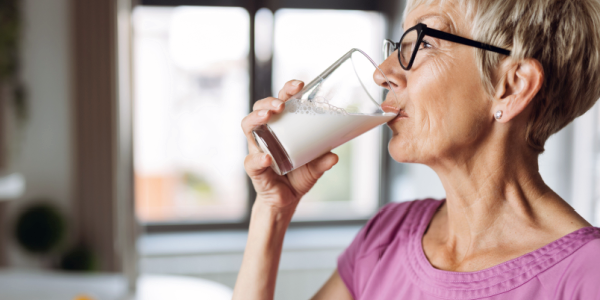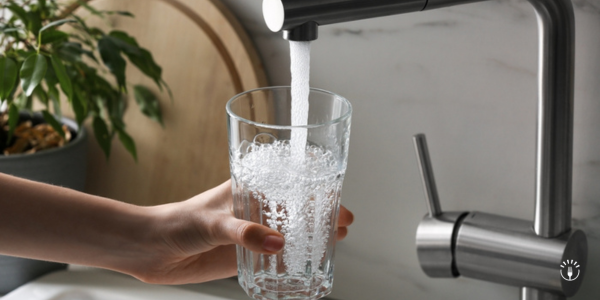
Medically known as hypertension, high blood pressure is when the heart forcefully pumps blood into the arteries. The force increases the pressure against the blood vessels.
If left uncontrolled, hypertension can lead to atherosclerosis, kidney disease, stroke, and heart failure. However, many contributing factors of high blood pressure are modifiable and within control!
One profound way to control high blood pressure naturally is by adopting a high blood pressure diet, which essentially focuses on nutrient-dense foods. It likewise encourages eating fewer foods that cause high blood pressure and others proven to lower it.
Foods to Avoid with High Blood Pressure
As a whole, a high blood pressure diet limits foods limiting foods rich in salt/sodium and sugar. To best understand sodium recommendations, recognizing how it varies from salt is important.
While salt is a major source of sodium, they are not treated equally as far as measurements. Sodium chloride, or table salt, is about 40 percent sodium which translates to the following salt/sodium equivalents provided by the American Heart Association (AHA):
• 1/4 teaspoon salt = 575 mg (milligrams) sodium
• 1/2 teaspoon salt = 1,150 mg sodium
• 3/4 teaspoon salt = 1,725 mg sodium
• 1 teaspoon salt = 2,300 mg sodium
The AHA specifically recommends no more than 2,300 mg of sodium a day and an ideal limit of no more than 1,500 mg per day for most adults, especially for those with high blood pressure. For practical use, look at the Percent Daily Value (%DV) on the Nutrition Facts label. A 5% DV or less of sodium per serving is low while 20% DV is considered high.
The AHA also recommends a maximum added sugar intake of 38 grams, or 9 teaspoons, for men. Women should limit added sugar intake to 25 grams, or 6 teaspoons.
Reduce products loaded with added sugars, as they essentially offer nothing more than calories and contribute to weight gain. What’s more, overweight and obese individuals have an increased risk of developing high blood pressure.
Overall, limit the salt shaker and the high sodium foods that can raise blood pressure listed below. Also, reduce the intake of those rich in added sugar.
Canned Beans
Canned beans can be loaded with sodium for preservation purposes. If purchasing canned beans, rinsing the beans with a colander and water can help wash away most of the salt.
Premade Soups
Despite the promotion of nutritious veggies, soups can be loaded with salt and sodium. And unlike canned beans, soups cannot be rinsed to reduce salt content. When choosing soups, try to find "low in sodium" or "reduced salt" products or take advantage of the nutrition facts label.
Canned or Bottled Tomato Products
Tomato sauce, paste, and ketchup are often loaded with salt. Create your own products with fresh or rinsed, canned tomatoes for ingredient and salt control.
Packaged and Processed Meats
Prepackaged meats, including breakfast sausages and hot dogs, tend to be loaded with sodium. Deli meats, such as turkey, may also contain added salt. Avoid the hidden sodium by purchasing directly from the butcher rather than in the grocery refrigerated section.
Frozen Meals
Meals found in the freezer section - pizzas, chicken strips, and individually frozen entrees - may be loaded with salt. Even some advertised "healthy" meals tend to contain high amounts of sodium.
But let it be known not all frozen foods and meals are laden in salt! Meal delivery services, like bistroMD, prepares and delivers a wide variety of nutritious and delicious low-sodium meals straight to doorsteps.
Heart-healthy options on the bistroMD menu are abundant, so there are countless meals to satisfy all flavor preferences!
Candy
Candy essentially offers nothing more than calories and sugar while spiking sugar levels. Skip out on sugary suckers and candy bars and opt for naturally-sweetened fruits high in potassium and fiber.
Soft Drinks
Soft drinks supply nothing more than sugar and calories the way candy does. A 12-ounce can of soda generally contains more than 9 teaspoons or 39 grams of sugar. That is the entire daily recommended amount for men and two-thirds for women!
Pastries
Doughnuts, cakes, and cookies are loaded with sugar and often trans fats. The combination may contribute to weight gain in excessive amounts. Reduce the consumption of these products and keep portions and servings in check.
Sauces
Sauces and condiments can be a double whammy when it comes to their composition of both salt and sugar. And ketchup is a notorious condiment for supplying high amounts of both!
Offer flavor to foods by spicing them up in the kitchen with fresh herbs and seasonings. Use small portions of dips and sauces, too.
Alcohol
Surprisingly, the consumption of alcohol has actually been shown to reduce heart disease risk. But only if consumed in moderation...
Too much alcohol can result in initial dehydration and long-term weight gain, both consequently increasing blood pressure.
Foods That Lower Blood Pressure
When it comes to diets for hypertension, nutrition experts encourage wholesome foods rich in fiber, potassium, magnesium, calcium, and other heart-healthy nutrients.
The DASH (Dietary Approaches to Stop Hypertension) diet is regularly named the best high blood pressure diet. It emphasizes a variety of nutritious foods, including fresh produce and low-fat dairy while moderating the intake of whole grains, fish, poultry, and nuts.
Specific foods that lower blood pressure include those detailed below, along with delicious ways to prepare and enjoy them!
Leafy Greens
Romaine lettuce, spinach, and kale are all prime examples and provide essential nutrients and fiber. Select fresh or frozen veggies when possible, as canned and frozen varieties may contain added salt.
Leafy greens make a solid foundation for salads or can be blended into smoothies or sauteed into soups, sauces, and various fillings.
Broccoli
A part of the cabbage family, broccoli is loaded with nutrients without amplifying total calories. Not only is broccoli budget-friendly, but highly versatile.
Snack on broccoli stalks with edamole, steam and serve as a side, or bulk up entrees.
Sweet Potatoes
Though considered a starchy vegetable, sweet potatoes are packed with nutrients while offering a little natural sweetness. They also provide high amounts of potassium, an essential mineral and electrolyte that has a documented role in hypertension prevention.
Skip out on sodium-rich fries from fast food and prepare heart-healthy sweet potato fries at home. Cinnamon-spiced mashed sweet potatoes are also a delicious and nutritious way to enjoy the vegetable.
Apples
"An apple a day might keep blood pressure at bay…"
Apples are a healthful fruit loaded with fiber, a plant component proven to support heart health and lower blood pressure. Their ability to increase uric acid in the blood may contribute to high antioxidant levels, ultimately protecting blood vessels from damage.
Munch on the fruit as is (with the skin for maximum fiber!), explode the kitchen aroma and taste buds with healthy baked cinnamon apples, or make a satisfyingly sweet plate of apple nachos.
Bananas
Bananas are much more than monkey business, as daily consumption can help to lower blood pressure thanks to their potassium content!
Snack on a banana with peanut butter, blend into a creamy smoothie, or kick any sweet tooth with healthy banana bread!
Beets
Beets are a natural source of dietary nitrates. When nitrates from beets are broken down in the body, nitric oxide is released. This nitric oxide impacts blood vessels by helping them dilate. When blood vessels dilate, blood pressure drops.
Beets offer another way of helping to lower blood pressure by being a source of potassium and magnesium. These combined nutrients are a main reason beets have been shown to help lower blood pressure.
Beets can be enjoyed raw, boiled, canned, roasted, juiced, fermented, or pickled. They also offer vibrant, natural color to various recipes.
Cherries
In addition to being a low glycemic fruit, cherries may help lower blood pressure. This especially serves true for tart cherries, and drinking the juice may be able to treat and prevent sore muscles.
Try giving tart cherry juice a shot or cut their bitterness by blending into a smoothie.
Pears
The skin of pears contains a powerful antioxidant known as quercetin, shown to reduce high blood pressure levels. Pears also offer an extensive amount of heart-healthy nutrients including calcium, magnesium, and potassium.
Nosh on a pear just like an apple, chop and add balance to a savory salad, or gently saute with a touch of cinnamon.
Tomatoes
Lycopene, a naturally occurring compound found in tomatoes that provide its red color, may also reduce systolic pressure. This is the pressure read first on a blood pressure reading.
Tomato products tend to be laden in salt but naturally reduce sodium intake by preparing fresh tomato salsa and tomato sauce at home.
Whole Wheat Pasta
Unless enriched, wheat over white pasta offers greater fiber, B vitamins, and other beneficial nutrients. Though pasta is naturally low in fat, be mindful of added sauces that may also be high in salt content. (The tomato sauce mentioned right above is a great alternative!)
Whole wheat linguine in shrimp pasta and whole wheat macaroni to make mac n’ cheese are great ways to enjoy pasta with added health benefits.
Oats
Inexpensive and versatile, oats are a great contributor to a well-balanced diet. They offer plant-based protein, fiber, iron, B vitamins, and more.
Meal prep a hearty bowl of overnight oats or throw whole or ground oats into baked products for added fiber and nutrients.
Brown Rice
Like pasta, a serving size is a half-cup of cooked rice. Switching from white to brown rice further boosts nutrients and fiber, as well as potentially reducing the overall risk of high blood pressure.
Making fluffy brown rice is simple and can be used as a base or addition to stir-fry, burrito bowls, and so much more.
Beans
Black, kidney, pinto, garbanzo, and other bean varieties serve as a vegetarian and vegan-friendly protein source. Their high content of fiber, potassium, and magnesium may help reduce blood pressure.
In addition to chili, beans make excellent additions to omelets, veggie burgers, rice, stews, and salads. As mentioned above, just remember to choose low-sodium and rinse off canned beans.
Chicken
Lean chicken breasts or tenders provide ample amounts of protein without a tremendous amount of calories. Stray away from fried and breaded forms to eliminate unwanted calories from fat.
Don’t resort to dry, bland chicken though! Enjoy perfectly grilled chicken, oven-baked chicken parmesan, homemade chicken pad thai, and other delicious (and inexpensive) chicken recipes.
Turkey
Like chicken, go away with or limit fried turkey products. Pick fresh deli turkey from a butcher, as prepackaged deli meats are oftentimes preserved with high amounts of sodium.
Sliced deli turkey makes a great protein-rich snack or lunch option while ground turkey boosts protein in chili.
Beef
Though beef does, in fact, contain the misrepresented saturated fat, it also offers rich sources of iron and protein. When consuming beef products, aim for lean and fresh cuts.
Leaner, lower-sodium beef recipes include beef and broccoli stir-fry, one-pan beef stroganoff, and healthier hamburgers.
Fish
Fish and shellfish are an excellent sources of lean protein, thus having great potential to facilitate weight loss. Fatty fish such as herring, tuna, sardines, and mackerel are also noteworthy related to their omega-3 fatty acid content.
With canned and prepackaged fish especially, watch out for sodium content. Give various varieties a try, including blackened tilapia, seafood stew, tuna steaks, and tuna noodle casserole.
Milk
Being a dairy product, milk is an exceptional source of calcium. Along with bone health, calcium may have a positive impact on blood pressure.
To limit overall fat and calorie content, choose a low-fat option. If lactose intolerant or sensitive to dairy, give a plant-based milk a try but try to stick to unsweetened products.
Greek Yogurt
Greek yogurt is packed with protein, calcium, and other nutrients that offer the body many benefits. Most are also great sources of probiotics, or good, live microorganisms that promote gut health and balance the microbiome.
Greek yogurt is a blank canvas for parfaits with fresh fruit, nuts, seeds, and other favorite toppings. It can be used in place of sour cream or mayonnaise for a lighter tuna or chicken salad and blends well to create a protein-packed smoothie.
Cheese
Calcium-containing cheese offers heart-protective benefits, especially in moderate amounts. When choosing cheese, try aiming for part-skim products without added salt.
Coming in so many varieties, snack on a light string cheese stick, sprinkle low-fat cheese atop a salad, or guiltlessly indulge in cheesy quinoa.
Olive Oil
Olive oil contains monounsaturated fat, a type of fat known to support heart health, and has been shown to control blood sugars. Monounsaturated fats are also found in other seed and vegetable oils.
Drizzle atop of salads, incorporate in dressings, replace traditional frying oils, and sauté with veggies.
Nuts
Nuts such as walnuts and pecans are rich sources of healthy fats. Naturally, all nut varieties are energy-dense and offer heavy amounts of calories.
All that said, choose unsalted options and keep portions limited to a small palm-full. Eat on their own as a snack, top onto salads for crunch, or enjoy blended down into nut butter.
Seeds
Like seed oils, their respected whole form also contains healthy fats. Omega-3 loaded chia seeds have also been shown to be cardioprotective by lowering blood pressure, cholesterol levels, and inflammation.
Throw seeds on salads for extra crunch, mix into smoothies, or simply munch on their own!
The Bottom Line on a High Blood Pressure Diet
When it comes to lowering blood pressure with diet, aim to reduce the intake of highly processed foods rich in added sugar and salt. Instead, focus mostly on consuming nutrient-rich foods from wholesome sources.
Since everyone has their own unique needs, seeking out medical advice and coordinating with a healthcare team is also recommended. Considering a meal delivery service that offers heart-healthy meals can also take out the guesswork for preparing and enjoying a high blood pressure diet!
References:
High Blood Pressure Fact Sheet. Centers for Disease Control and Prevention. Reviewed July 19, 2021. https://www.cdc.gov/bloodpressure/facts.htm.







